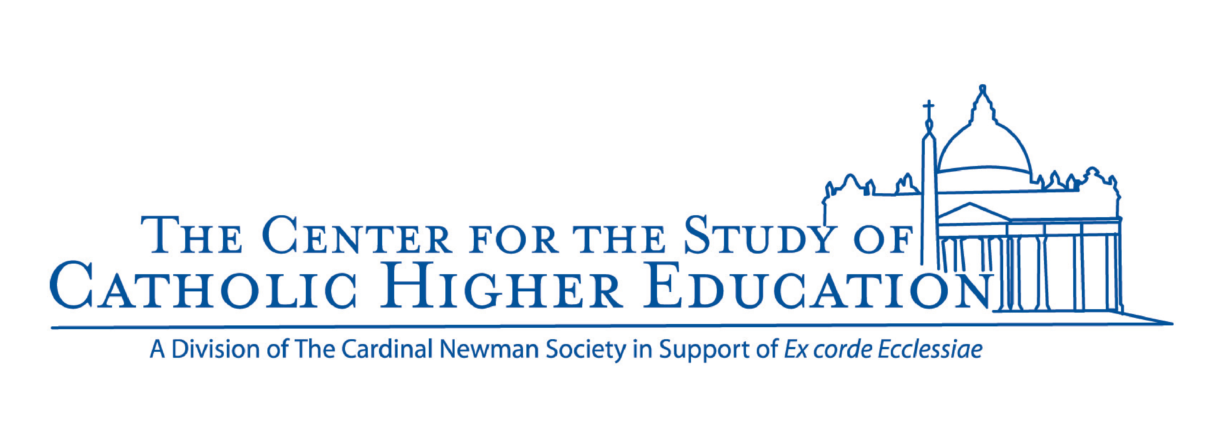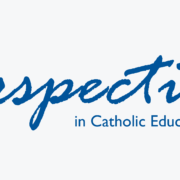General Education at Catholic Colleges and Universities
Executive Summary
Across the universe of American higher education, increasing attention is being given to the weakening of general education standards. This study examines the general education requirements at Catholic colleges and universities. It compares the general education programs at 184 Catholic colleges and universities to all other American colleges and universities, to see if the Catholic colleges are more comprehensive (that is, devote a larger share of the curriculum to general education) and more coherent (that is, provide their students with a fairly well identified set of courses that provide a unified vision of the body of knowledge that the institution believes that all educated citizens should be familiar with). The study determines that Catholic colleges as a whole are more comprehensive and slightly more coherent than colleges and universities overall. Next, the study examines whether those colleges and universities included in the Newman Guide to Choosing a Catholic College differ substantially from the other Catholic colleges. The Newman Guide schools are, indeed, significantly more comprehensive and coherent than the other Catholic colleges and universities. Finally, the distinctive role of theology and philosophy in a Catholic education was examined. Catholic colleges and universities retain, to varying degrees, their commitment to the study of philosophy and theology, which serve as integrative disciplines within the curriculum. A surprising finding, however, was the extent to which the non-Newman Guide Catholic colleges and universities allow students to fulfill their theology requirements without actually studying Catholic theology.
General Education at Catholic Colleges and Universities
Pope Benedict XVI, in his 2008 address to U.S. Catholic educators, reminded them of the high calling of a university in the overall economy of salvation:
Set against personal struggles, moral confusion and fragmentation of knowledge, the noble goals of scholarship and education, founded on the unity of truth and in service of the person and the community, become an especially powerful instrument of hope.1
Throughout history and even today, in addition to supporting the intrinsic benefits of education for human development, the university plays a critical role in preparing students for successful careers. Universities have consistently struggled to balance the educational goals of pursuit of truth and moral development with the more instrumental goals of career preparation and skill development.2
In most American colleges and universities today, it is in the pursuit of a major field of study that students focus on developing the career-related skills and knowledge that they will take with them into the world. The more intrinsic benefits of higher education, such as those described by Pope Benedict, are emphasized and developed in the general education program which commonly precedes specialization.
A general education program attempts to provide an overview of the fundamental areas of human knowledge found in the traditional liberal arts. The curriculum may further aim at integration of knowledge by requiring interdisciplinary courses or otherwise encouraging interdisciplinary approaches to human problems. A well-designed general education curriculum will teach students to comprehend knowledge according to its proper order and in relation to other knowledge, developing what Blessed John Henry Newman called a “philosophical habit” of mind.
Historically, the means by which the American university (religious or secular) fulfilled its mission and oriented the student toward the unity of truth was through a core curriculum which gave all students in the university a common, integrated liberal arts education. In a core curriculum, particular courses are required of all students, or at least a broad set of students (for instance, enrolled in a certain school within a university). The university determines that every student should, at a minimum, have studied particular facts, concepts, themes, authors, literature, etc., while attaining an introductory or intermediate level of skill or knowledge in the disciplines of the liberal arts. A Catholic university, for instance, might expect students to graduate with a common foundation in Catholic theology and Western philosophy, literature, and history by studying particular texts, authors, leaders, etc. The prescribed core ensures that all students share a common education and can dialogue on common themes, resting on the university’s judgment about the importance of certain subject matter. Moreover, the courses in a well-designed core are highly integrated to illustrate the unity of truth across disciplines.
In 1884 the landscape of American higher education was changed forever, when Harvard University discarded its core and introduced an elective system at the heart of its curriculum.3 The unified set of courses that made up the core curriculum was replaced by a series of “distribution” requirements for graduation. The distribution model allows students to choose among many courses introducing them to a variety of disciplines and methods of inquiry, with less emphasis on the integration of knowledge across disciplines. The topics of the courses are varied; there is little or no effort to promote the study of common texts or topics. Whereas the core curriculum emphasizes a shared body of knowledge and a common basis for dialogue—in the United States, typically requiring students to contemplate classical works and the ideas that shaped Western civilization and Christianity—the distribution model often encourages a student’s encounter with a variety of perspectives and arguments, independent of a university’s judgment about the value of particular subject matter.
This elective, distribution system of general education rapidly overtook the more traditional core model in the late 19th and early 20th centuries. While Catholic colleges and universities held to a core model longer than most other types of universities, by the 1960s most of the Catholic institutions of higher education had joined the mainstream movement away from a unified core curriculum to a distribution, elective-based model. Unlike their secular counterparts, however, most Catholic colleges and universities retained vestiges of a unified, integrative curricular expression through their requirements that all students study philosophy and Catholic theology, ensuring that students recognize unifying themes and consider the great human questions when studying other disciplines.
This study will examine the ways in which contemporary Catholic colleges and universities approach the question of general education. If it is true that, as Blessed Newman implies, it is through the integration of the specialized branches of knowledge that a student “apprehends the great outlines of knowledge, the principles on which it rests, the scale of its parts, its lights and its shades, its great points and its little, as he otherwise cannot apprehend them,” and that this represents “the special fruit of the education furnished at a University,” the state of general education is of paramount importance for all who are interested in Catholic higher education.4
This study confirms that Catholic colleges and universities today, by and large, remain committed to general education requirements, distinguishing Catholic institutions from their counterparts with generally weaker standards. But most Catholic educators have embraced the distribution model of electives, abandoning the traditional core curriculum. Some remnant of a distinctive role for philosophy and religious studies remains in place at most Catholic institutions, although there is evidence of a declining emphasis on Catholic theology.
General Education in American Higher Education
Even in the secular universities, increasing attention is being given to the disappearance of core curricula, the weakening of general education standards, and the need for attention to liberal arts education for undergraduates. With the rise of the research university, with its hyper-specialization and concomitant growth of faculty allegiance to their specialties, there has been an overall de-emphasis on undergraduate general education, and in particular declining interest in curricular integration. A National Association of Scholars (NAS) study in 1996 documented the diminishing role of general education in the undergraduate experience.5 This study demonstrates that not only has the distribution model of general education achieved near-total hegemony in the American higher education system, but also that the proportion of the overall curriculum devoted to any form of general education has been steadily shrinking over the course of the 20th century. In 1914, the average student devoted about 55 percent of the credits needed for graduation to general education requirements; by 1993, this was down to 33 percent.
More recently, the Association of American Colleges and Universities (AACU) commissioned a study to analyze trends in this area, and this study reinforced the picture of a profound movement away from the concept of an integrative curriculum to a highly specialized, even fragmented, educational experience.6 The AACU study confirmed the reduced portion of the curriculum that is devoted to general education. Only 6 percent of the respondents indicated that half or more of the credits needed for graduation are devoted to general education; more than 25 percent of the respondents indicated that a third or less were so devoted. In most of these institutions, several of these requirements can be fulfilled in the course of pursuing a major, so there are even fewer credit hours that are specifically devoted to general learning, rather than the specialized education that makes up the major field of study.
The vast majority of institutions (80 percent) follow a distribution model of general education, in which students select courses from various categories to fulfill the general education requirements. While most of these colleges provide some guidance to students with regard to specific courses or common experiences, the fundamental model is a choice-based approach to general education, with the emphasis on exposure to different fields of study rather than engagement with specific intellectual content.
One could conclude, then, that over time general education in America has become both less comprehensive (that is, less a significant and robust part of the overall educational experience) and less coherent (that is, less a unified and common set of courses designed to present an integrated approach to knowledge).
This report seeks to evaluate how the overall trends in American higher education are reflected in Catholic colleges and universities. The general education programs at Catholic colleges and universities have been examined and categorized with respect to their coherence and comprehensiveness. Since a distinctive attribute of Catholic core curricula has traditionally been a strong emphasis on theology and philosophy, this study also considers the role these disciplines currently play in the general education programs at Catholic institutions of higher education. Finally, this study examines the correlation between the structure of the general education program and the Catholic identity of the institution.
The general education programs at 184 Catholic, four-year, co-educational colleges and universities in the United States were examined. While there are 251 institutions of higher education recognized by the Association of Catholic Colleges and Universities, many of those are not relevant to this study. Excluded are exclusively graduate-level institutions, two-year colleges, seminaries, conservatories, and specialized health-care institutions. Two colleges were eliminated because of insufficient information regarding their general education programs.
Data was collected online from college catalogs. The information was drawn from the catalog that included the Fall 2009 semester. The content of required theology courses was drawn from the information available online in August 2012.
Comprehensiveness of General Education at Catholic Colleges and Universities
The comprehensiveness of general education programs was determined simply by the overall number of credit hours required. The incredible complexity of many of today’s general education programs made even this classification difficult, so several methodological definitions and decisions were required. General education was defined as required courses that all students had to pass in order to graduate. If, as was the case in some large universities, there were different general education programs for different degrees (i.e., general education for the school of nursing, the school of business, etc.), the classification was based on the “college of arts and sciences” or equivalent degree program.
These general education requirements could be specific courses (all students must pass English 101, for example), distribution requirements (all students must take an English course), or an evaluated competency (all students must either pass English 101 or score an 85 percent or higher on the freshman writing exam). Competency requirements were only counted as part of general education if they substituted for required coursework (so, for example, some colleges require students to demonstrate computer skills, but that was not counted toward general education, because no computer literacy class is required if they do not pass the test). In most cases, courses taken to fulfill general education requirements may also count for major requirements (so American history might be a requirement for general education, but it could also count toward courses needed for a history major). A few colleges do not allow any course taken in a student’s major field to count for general education, which has the effect of increasing the number of general education requirements; however, it was impossible to account for this given the wide variation in student majors.
The very nature of most general education systems, with their wide array of choices and possible substitutions, made it difficult to make uniform determinations of exactly how many credit hours were required to complete the program. Within institutions there can be variation from student to student. For example, many institutions require language to a third semester competency; some students need to take any language courses, while others take nine to 12 hours of language instruction.
It seemed best to classify programs in fairly broad ranges, rather than attempt a precise ranking based on a specific calculation of credit hours. Therefore, those institutions which require, on average, 55 credit hours or more of general education (almost half of the credit hours required for a degree and the average amount of general education required 100 years ago) were classified as having a high level of comprehensiveness. Those which require from 45 to 54 hours (more than a third, but less than half, and generally above the median 46.4 hours reported in the AACU survey) were classified as medium, while those which require 44 hours or fewer (roughly one third or less of the required credit hours) were classified as low.
While it is impossible to make direct comparisons with the studies done either for the NAS or the AACU, because the methodology was different, it is possible to draw some general conclusions. Catholic colleges and universities tend to devote more of their curriculum to general education than is normal in U.S. higher education (see Figure 1). As noted above, about half of the colleges in the AACU survey would fall into the low range in this classification, but at Catholic institutions, 76 percent fall into the medium or high ranges of general education comprehensiveness, indicating a distinctive commitment to general education requirements in Catholic higher education.
FIGURE 1

Coherence of General Education at Catholic Colleges and Universities
How coherent are the general education programs at Catholic colleges and universities? General education programs were classified based on the proportion of general education credit hours that were elective (that is, a course chosen from a list of options) and what proportion were required.
In some cases, a small range of choice was allowed, such that the college or university retained significant direction over what the student learns. Most institutions allow students to choose which language they will study for their foreign language requirement. Most institutions will place students into the appropriate mathematics course based on their proficiency. And, in some cases, students might choose between British and American literature to fulfill a literature requirement. In situations like these, where the choice is either skill-dependent or limited to three or fewer options, this study classifies the credits as “required” even though there is some element of choice.7
Once again, institutions were placed within ranges. Those which require particular courses for more than half the total general education curriculum were considered to have high coherence; those between one third and one half were considered medium; and those below one-third were considered low.
The results show that Catholic colleges and universities, much like their non-Catholic peers, have largely abandoned a strongly coherent core curriculum (see Figure 2 below). Eighteen percent of the Catholic institutions assign half or more of their general education courses. Only 44 percent require as much as one-third of the courses that comprise the general education curriculum.
FIGURE 2

Thus, while Catholic colleges and universities generally remain distinctive with regard to the comprehensiveness of their general education programs, they, like their non-Catholic counterparts, have embraced curricular choice as the dominant mode of delivering general education. Many today lack a coherent vision of the subjects and knowledge that should be commonly learned by all students.
Influence of Strong Catholic Identity
Given the wide range of commitment to Catholic identity in Catholic higher education and the historical correlation between Catholic colleges and a strong core curriculum, it seems appropriate to analyze whether there are significant differences among Catholic institutions. This study looks specifically at the 19 Catholic colleges and universities which were included in the online edition of The Newman Guide to Choosing a Catholic College as of the fall of 20098, which identifies colleges that “give priority to their Catholic identity and actively practice it.”
Although the Newman Guide colleges vary considerably from one another (some are extremely small and dedicated solely to the liberal arts, while others are much larger and have a wide variety of academic programs), as a group they are clearly distinctive when compared with the overall universe of Catholic higher education. Not only do they demonstrate strong Catholic identity, but their general education programs are significantly more comprehensive (see Figure 3 below).
FIGURE 3

None of the Newman Guide colleges falls into the low category for comprehensiveness of general education, whereas 78 percent fall into the high category. Nearly the same percentage of other Catholic colleges and universities are in the medium or low category. The green “all” bar is included as a reminder of how the entire group, both Newman Guide and other Catholic institutions, is categorized.
Similarly, the Newman Guide colleges show strong coherence in their general education requirements, compared to other Catholic institutions (see Figure 4 below). Sixty-eight percent of the Newman Guide institutions fall into the high category on the coherence scale, whereas 87percent of the other Catholic colleges and universities are in the medium and low categories.
FIGURE 4

Philosophy and Theology in General Education
Most Catholic colleges and universities require students to take some philosophy and theology courses. As Alisdair MacIntyre has pointed out, this distinctive attribute of Catholic institutions reflects their commitment to helping students integrate knowledge and bring the tools of faith and reason to bear upon the fundamental questions they encounter in other disciplines, and so refine their capacity for sound judgment9.
Likewise Blessed John Paul II, in the apostolic constitution Ex corde Ecclesiae, indicated that philosophy and theology have a special role in providing the unifying framework for the pursuit of truth that should mark the Catholic university:
Aided by the specific contributions of philosophy and theology, university scholars will be engaged in a constant effort to determine the relative place and meaning of each of the various disciplines within the context of a vision of the human person and the world that is enlightened by the Gospel, and therefore by a faith in Christ, the Logos, as the centre of creation and of human history10.
Thus, it is appropriate that these disciplines play a special and significant role in the curriculum of a Catholic college or university. While the amount of philosophy and theology required varies significantly, from one course per semester in each discipline over four years to just one course total in either discipline11, 75 percent of Catholic colleges and universities require at least three courses in some combination of these two disciplines.
However, the size of the philosophy and theology requirement does not tell the whole picture. The integrative function that theology plays in the traditional conception of the Catholic university is that it gives students the opportunity to examine all of their learning in the light of the truths of the Catholic faith. For that to happen, obviously, the theology requirement would have to offer students those truths—that is, students would have to study genuine Catholic theology.
To be clear, it is not the purpose of this study to judge the quality or faithfulness of theology courses. But the descriptions of courses permitted to satisfy the theology requirements of general education programs at Catholic institutions were examined to determine if they were Catholic theology at all, by their own definition. In other words, if the description stated that the course covered Catholic (or, in fact, any Christian) theology, no further investigation into the content or approach of the course was carried out.
Also, the general education requirements were examined to ensure that theology courses are in fact required. At almost every Catholic institution, students can study Catholic theology if they wish. The question being considered is whether they are required to do so. A requirement which could be satisfied by taking a course that is not Catholic theology, even if Catholic theology courses would also be accepted, has not been labeled a Catholic theology requirement.
According to these criteria, in 54 percent of the Catholic colleges and universities studied, the “theology” requirement could be satisfied without actually studying Catholic theology. In a few of these institutions, there is no theology requirement at all. Students may be required to take courses in either philosophy or theology, and so the requirement can be fulfilled entirely with philosophy courses. Often the theology requirement is actually a “religious studies” requirement; religious studies is an academic discipline which focuses on the study of religion as a social phenomenon, but without any basis in a particular faith. Or students may be permitted to study comparative religions or the theology of non-Christian faiths such as Hinduism or Buddhism.
The pervasiveness of the theology requirement, then, does not necessarily coincide with a commitment to ensure that all students are instructed in the truths of the Catholic faith.
Moreover, this area reveals the sharpest divergence between the Newman Guide institutions and other Catholic colleges and universities (see Figure 5 below). While all of the Newman Guide schools require Catholic theology, 61 percent of other Catholic institutions do not.
FIGURE 5

Conclusion
This study shows that Catholic colleges and universities remain somewhat distinctive within the universe of American colleges and universities, with significantly more comprehensive general education programs. But many Catholic institutions have followed their non-Catholic counterparts by embracing a distribution approach to general education and eliminating common core requirements.
Catholic colleges and universities retain, to varying degrees, their commitment to the study of philosophy and theology, which serve as integrative disciplines within the curriculum. A surprising finding, however, was the extent to which Catholic colleges and universities allow students to fulfill their theology requirements without studying Catholic theology.
A closer look revealed that those Catholic institutions that most clearly and pervasively embraced their Catholic identity (specifically, those that were identified in the online edition of The Cardinal Newman Society’s Newman Guide to Choosing a Catholic College as of fall 2009) are much more likely to provide their students with a comprehensive, coherent general education program with a significant emphasis on philosophy and theology as integrative disciplines, and a definite requirement that students study Catholic theology.
- His Holiness Pope Benedict XVI, Address to Catholic Educators, April 2008.
- Interestingly, a number of studies have shown that even in purely instrumental terms—i.e., as measured by career success—those colleges that focus on the traditional liberal arts (those fields of study associated with the pursuit of truth for its own sake) and provide curricula that develop the skills associated with a traditional liberal arts education produce graduates who are more successful in their careers than those that are more focused on preparation for specific careers. See, for example, the 2012 Social Science Research Council Survey “Documenting Uncertain Times: Post-Graduate Outcomes of the Academically Adrift Cohort” (http://highered.ssrc.org/?page_id=158), which describes the positive economic impact of high-level learning associated with a liberal arts degree; Institute for Education Sciences, “Ten Years after College: Employment Experiences of 1992-93 Bachelor Degree Recipients with Academic and Career-Oriented Majors,”(Washington: National Center for Education Statistics, February 2008), which analyzes the elimination of the salary gap between employees with career-oriented majors and those with liberal arts majors over time; and the 1998 study by the Annapolis Group (www.collegenews.org/about-liberal-arts-colleges), which found that graduates of liberal arts colleges tend to be disproportionately represented among Fortune 500 CEOs, Pulitzer Prize winners, science Ph.D.s, and even U.S. presidents.
- R.E. Houser, “A Rekindling of the Light: The Past, Present, and Future of a Catholic Core Curriculum” (Manassas, Va.: Center for the Advancement of Catholic Higher Education, September 2008), at www.catholichighered.org. Houser presents a comprehensive overview of the development of the concept of general education, specifically as it applies in the context of Catholic higher education.
- John Henry Newman, The Idea of the University, Discourse 5. “Knowledge its Own End” http://www.newmanreader.org/works/idea/discourse5.html.
- The National Association of Scholars, “The Dissolution of General Education” (1996) http://www.nas.org/articles/the_dissolution_of_general_education_1914_1993.
- Hart Research Associates, “Trends and Emerging Practices in General Education” (2009) http://www.aacu.org/membership/documents/2009MemberSurvey_Part2.pdf.
- In the NAS study, a choice among a limited number of options was called a “course cluster” and was similarly treated as a single coherent requirement, rather than a distribution requirement.
- The Newman Guide to Choosing a Catholic College, www.TheNewmanGuide.com.
- Alasdair MacIntyre, “Catholic Universities: Dangers, Hopes, Choices,” in Higher Learning and Catholic Traditions, ed. Robert E. Sullivan (Notre Dame: University of Notre Dame press, 2001).
- Ex corde Ecclesiae, 1990. This point is elaborated upon by Alasdair MacIntyre in his God, Philosophy, Universities: A Selective History of the Catholic Philosophical Tradition (Baltimore: Rowman & Littlefield Publishers, 2009).
- Because these disciplines are often paired in college requirements (for example, students may be required to take a total of three courses, one in philosophy, one in theology, and one more in either of those disciplines as the student chooses), it was thought best when looking at the size of the requirement to consider the overall requirement in both disciplines.





 Photo by David Mark via Pixabay CC0
Photo by David Mark via Pixabay CC0 
